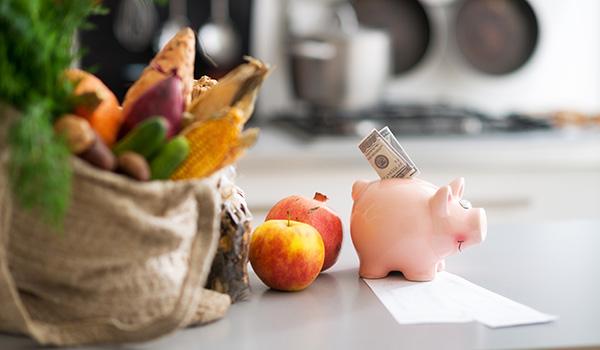
If you’ve found it hard to eat healthy on a budget, you’re not alone. Here are a few tips and tricks that might be able to help you fill up your pantry and keep your wallet full as well. The reality is that eating healthy actually saves money.
Increase your intake of whole grains
Grain products include foods prepared from oats, cornmeal, wheat, rice, barley, or other cereal grains, according to the USDA. And there are two types of grains: refined grains and whole grains.
The bran, germ, and endosperm are removed from refined grains during milling. Although milling provides the product a finer texture, eliminating the bran and germ reduces the amount of fiber, iron, and B vitamins in the product. The following are some examples of refined grains:
- White rice
- Breads and pastries made with white flour
- Pasta (regular)
Whole grains include both the bran and the germ, making them a whole grain. Whole grains are high in fiber and include a variety of nutrients not found in processed grains. Whole grains include the following:
- Rice (brown)
- Rice that has been harvested from the wild
- Wheat from a foreign country
- Oats, whole or rolled
- whole wheat flour
- Buckwheat
- Millet
- Barley with all of the grains
- Quinoa
- Popcorn
- Sorghum (whole grain)
- Corn with all of the grains
- Rye grain in its entirety
Whole grains, according to the Mayo Clinic, lessen your risk of heart disease. Whole grains are high in fiber, which keeps your digestive system healthy and functioning, and they expand once inside your stomach, making you feel satisfied. According to the USDA, you should have 3 to 8 ounces of grains each day, with 50 percent of those grains being whole grains.
Are you starting to see that eating healthy on a budget isn’t that hard? It’s true.
Lentils & Beans
Eating healthy saves money when it comes to this tip! I usually have a few cans of beans and dry lentils in my cupboard because they’re inexpensive and I know I can transform them into a satisfying dinner at a moment’s notice – even if I don’t have many other ingredients on hand. I make a substantial dal out of lentils and use it as a filler for tacos and wraps, as well as a salad basis. Beans may be marinated and used as a toast topping, sautéed with greens, or made into a fast, protein-rich salad.
Keep a herb garden
Over time, a $2.99 bouquet of basil or parsley from the grocery store adds up! Instead, go out and get some herb plants to establish your own herb garden. We always have parsley, basil, mint, and dill plants on hand at That Clean Life HQ, so we never have to buy herbs throughout the summer. If you are eating healthy on a budget, you need to include this one for sure.
It’s OK to purchase canned or frozen fruits and vegetables
“There’s a myth that everything has to be fresh to be healthy,” Ms. Vasquez adds. “Many canned or frozen foods are equivalent to fresh meals in terms of nutritional content.” Frozen spinach may be less palatable than a bundle of greens from the farmer’s market, but it has the same amount of fiber and vitamins. In fact, because frozen veggies are frozen so promptly after harvesting, they tend to retain their nutritional value. Protein-rich foods include canned beans, salmon, and tuna.
Don’t food shop for convenience
If you are prepared to put forth a little effort, you can save money. Buy entire chickens and chop them into pieces, shred or grate your own cheese, and stay away from instant rice and instant oatmeal, for example. Salad mixtures in bags are more expensive and may not last as long as a head of lettuce.
Eating Healthy On A Budget
How are you eating healthy on a budget? Tell us how eating healthy has saved you money!

